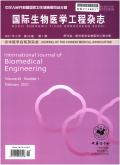Regulation of Wnt signaling pathway on calcium hydroxide-promoted osteogenic differentiation of hDPSCs
引用次数: 0
Abstract
Objective To investigate the role of Wnt/β-catenin signaling pathway in the osteogenic differentiation of human dental pulp stem cells (hDPSCs). Methods After 14 days of the calcium hydroxide training, the cytoskeletal changes of hDPSCs, the expression of β-catenin, i.e. the key promoter of in the Wnt signaling pathway, and the cell localization were detected by laser scanning confocal technique. The Wnt signaling pathways were up-regulated and inhibited, and the osteogenic differentiation and mineralization of hDPSCs were detected by Western Blot and alizarin red staining after 14 days of the training. Results The cytoskeleton of hDPSCs was rearranged by the effect of calcium hydroxide, and the β-catenin migration from nucleus to cytoplasm were observed. The number of calcium nodules in hDPSCs was decreased after blocking Wnt signaling pathway by Dickkopf-related protein 1 (DKK-1). The calcium hydroxide treatment can promoted dentin sialophosphoprotein (DSPP) expression in hDPSCs. Conclusions Calcium hydroxide can down-regulate the expression of canonical Wnt signaling pathway and promote osteogenic differentiation and mineralization and odontogenetic differentiation of hDPSCs. Key words: Calcium hydroxide; Osteogenic differentiation; Human dental pulp stem; Wnt pathwayWnt信号通路对氢氧化钙促进hDPSCs成骨分化的调控
目的探讨Wnt/β-catenin信号通路在人牙髓干细胞(hDPSCs)成骨分化中的作用。方法采用激光共聚焦扫描技术检测氢氧化钙训练14 d后hDPSCs的细胞骨架变化、Wnt信号通路关键启动子β-catenin的表达及细胞定位。Wnt信号通路上调和抑制,培养14天后,Western Blot和茜素红染色检测hDPSCs的成骨分化和矿化情况。结果hDPSCs在氢氧化钙作用下,细胞骨架发生重排,β-连环蛋白从细胞核向细胞质迁移。dickkopf相关蛋白1 (DKK-1)阻断Wnt信号通路后,hDPSCs中钙结节数量减少。氢氧化钙处理可促进牙本质唾液磷蛋白(DSPP)在hdpsc中的表达。结论氢氧化钙可下调典型Wnt信号通路的表达,促进hdpsc成骨分化、矿化和成牙分化。关键词:氢氧化钙;成骨分化;人牙髓干;Wnt通路
本文章由计算机程序翻译,如有差异,请以英文原文为准。
求助全文
约1分钟内获得全文
求助全文

 求助内容:
求助内容: 应助结果提醒方式:
应助结果提醒方式:


